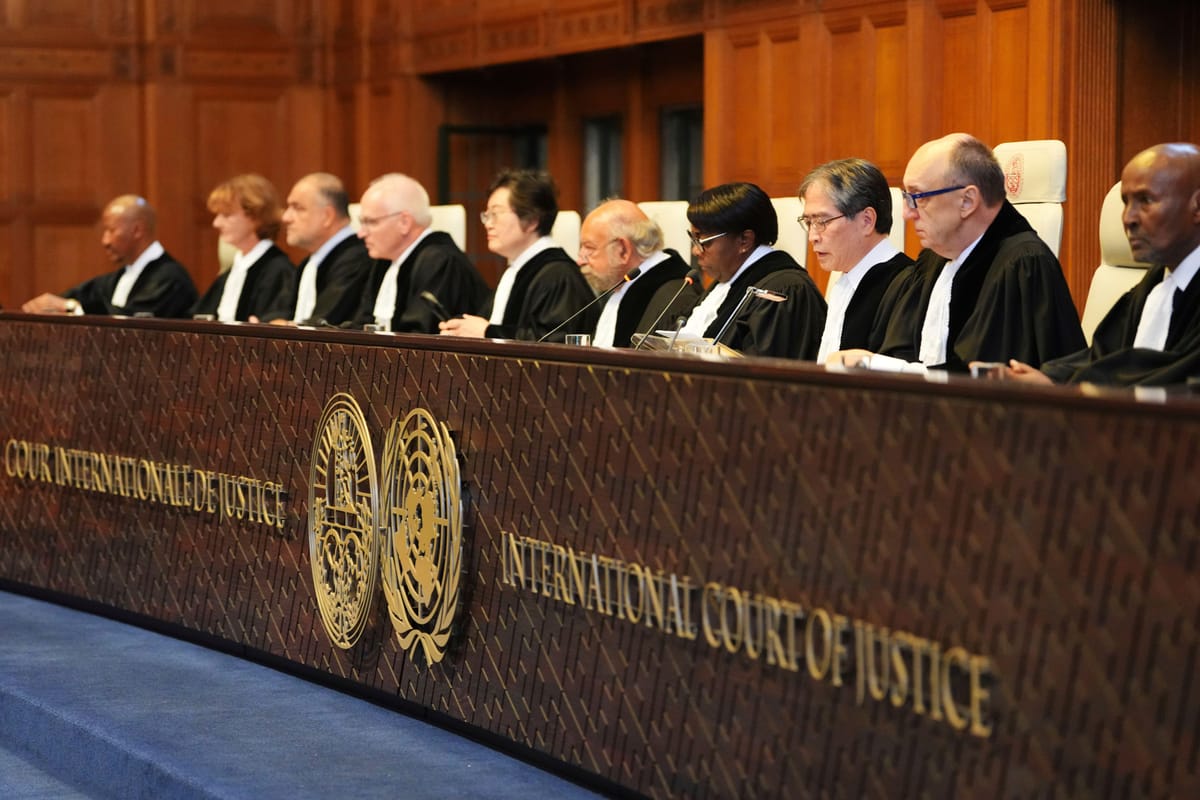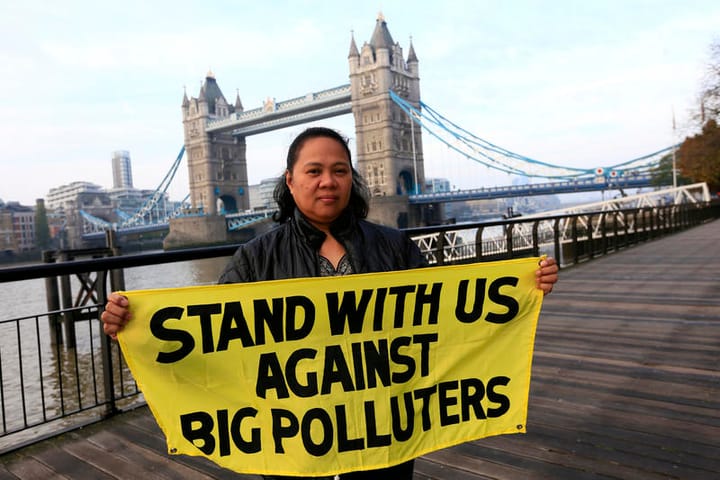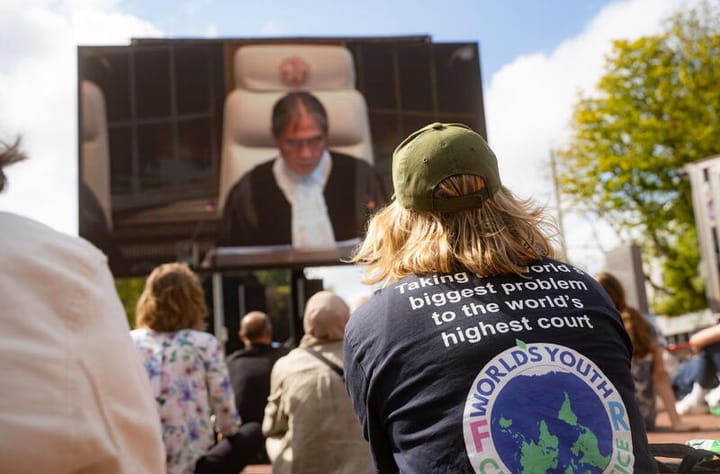Through the looking glass: How the ICJ watered down its advisory opinion

Two weeks ago, I published an article about the next steps for the International Court of Justice’s (ICJ) landmark advisory opinion on climate change. Today, I’m taking a look at it from a different angle.
A lot of attention was paid to the fact that the advisory opinion was agreed unanimously - not a common outcome at the ICJ - and it is true that all 14 judges signed their names to the document.
But that doesn’t mean they were all happy with its conclusions; in fact ten had more to say on the subject. While this is not unusual - plenty of the court’s opinions come loaded with judicial baggage - it does give a glimpse into the difficult conversations that took place behind the scenes and a strong hint (if you needed it) that courtrooms are political spaces too.

The strongest critique comes from Somali judge Abdulqawi Yusuf, a former ICJ president who is resigning at the end of the month.
Yusuf says that while it was “difficult to disagree” with the court’s findings, which essentially restate well-known legal rules and principles, “they do not properly and adequately respond to the questions” put to it in 2023 by the UN General Assembly which “did not ask for a scholarly dissertation on general obligations of states nor on theoretical legal consequences”.
He believes the court should have clearly distinguished between states that caused the climate crisis and those that are particularly vulnerable to its impacts. “This distinction cannot be set aside,” he says, noting that it is in the General Assembly resolution, is recognised in international climate treaties themselves and is fully supported by the science.
While the court was not asked to name and shame the world’s worst polluters, Yusuf says it was asked to explicitly spell out what the practical legal consequences for them were but missed a “historic opportunity” to do so.
And it failed to explicitly say which states stand to lose the most, particularly small island developing states and least developed countries, he writes: “They are not nameless.”
Yusuf accuses the ICJ of misinterpreting the question, like many judges before him referencing Lewis Carroll's Alice in Wonderland to highlight the resulting absurdity:

This is not an abstract problem, argues Yusuf; the court “failed to rise to the occasion” and to provide the international community with the right “legal tools” to tackle the problem. “This has fundamentally undermined the legal relevance of the advisory opinion, as well as its practical significance for those who have suffered most from the adverse effects of climate change.”
Court vice-president Ugandan judge Julia Sebutinde agrees that the opinion “falls short” in fully addressing these issues, adding that it “ignores or circumvents" the element of climate justice. She also wanted the court to go into more detail about possible remedies, particularly innovative ones. Indian judge Dalveer Bhandari agrees that the court “should have identified more concrete instances of legal consequences arising from the established breaches”.
But Sebutinde thought the AO’s discussion of attribution and causation was irrelevant to the questions at stake and should have been left to courts to settle in specific lawsuits.
In a joint opinion, Bhandari and US judge Sarah Cleveland wanted the court to be “more forceful” on fossil fuels, given their “outsized influence” on climate change. They maintain that the law requires states to phase out fossil fuels, through production, licensing and subsidies. And Cleveland felt personally there should have been more about the protection of carbon sinks.
In another declaration, four of the judges want to be super clear that they believed the climate change treaties “are not proxies for assessing compliance with the rules of customary international law” - clearly concerned that the wording as it stands allows room for interpretation. German judge Georg Nolte disagrees.

Chinese judge Xue Hanqin, meanwhile, takes umbrage at the advisory opinion’s description of a group of countries that have “progressed considerably in their development since the conclusion of the UNFCCC in 1992, some of which now contribute significantly to global GHG emissions and possess the capacity to engage in meaningful mitigation and adaptation efforts”. That line is widely understood to refer to countries like China and India which have continued to maintain that they are developing states with fewer obligations despite hugely rapidly rising emissions.
Xue writes that, while climate change is a contemporary issue of development in international law, it has its roots in the past, adding that rapidly developing countries have essentially imported developed countries’ emissions. She warns that any change from the previously understood distinction of developed/developing “will undermine the international co-operation in the global action against climate change”.
The judges have many other criticisms of the final document.
Yusuf would have liked the court to have examined the consequences of harmful acts that were not illegal under international law and to have made a clear decision about how the “well-known” ‘precautionary principle’ applies. In his own opinion Bhandari is concerned about its fuzziness over the ‘polluter pays principle’.
Sebutinde adds that it “glosses over” issues about the impact on current and future generations. South African judge Dire Tladi believes it also had enough evidence to properly assert the right to a clean and healthy environment rather than going at it sideways.
Cleveland wanted more about the climate harm of armed conflicts and on international investment law.
Slovak judge Peter Tomka’s comments are mainly a criticism of the court’s approach to the issue of statehood, accusing it of making “Delphic pronouncements” on a difficult and sensitive topic without any decent reasoning.
“Everything’s got a moral, if only you can find it”
Margaretha Wewerinke-Singh and Jorge Viñuales, who were part of Vanuatu’s legal team for the ICJ proceedings, do not seem too perturbed by these criticisms, saying the court managed to find a “high common denominator” despite many difficulties and clearly rejects many of arguments that big greenhouse emitters have made to try to avoid accountability.
It is ultimately a document crafted by compromise, necessary in a world where the order of international law is increasingly precarious. Tladi notes that the “magnitude of the climate change crisis” demanded a unified front from the world court.
But these additional statements are not meaningless.
Individual legal opinions allow judges to put their personal views on the record. “No number of advisory opinions, no matter how robust or thoughtful, can save the planet from the ongoing climate crisis,” writes Tladi in his slightly morose document. But he still maintains “modest hope that those in positions of power will realise, before it is too late, that money cannot be eaten.”
They can also play an important role in shaping the law, and it is notable that some commentators have already started referring to points made in the individual statements in their analyses as well as the central advisory opinion.
And most importantly they express some of the serious limitations of this document, presaging the legal and political arguments to come.
In all the thousands of words expended about the AO already, views overlap, contradict one another and perhaps reveal more about what the writer than they do about the document itself. People will see in it what they want to see, and say publicly about it what they want others to believe.
Correction: An earlier version of this article had 15 judges signing their names to the advisory opinion. In fact, only 14 were sitting at the time of delivery.



